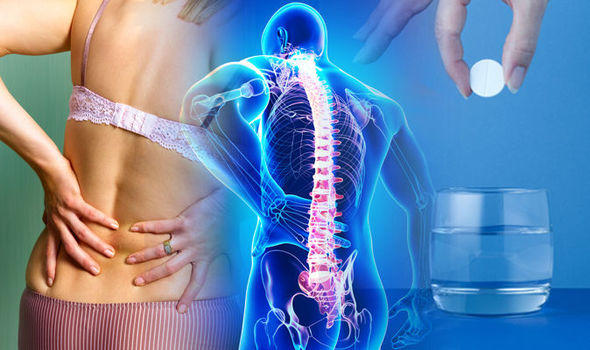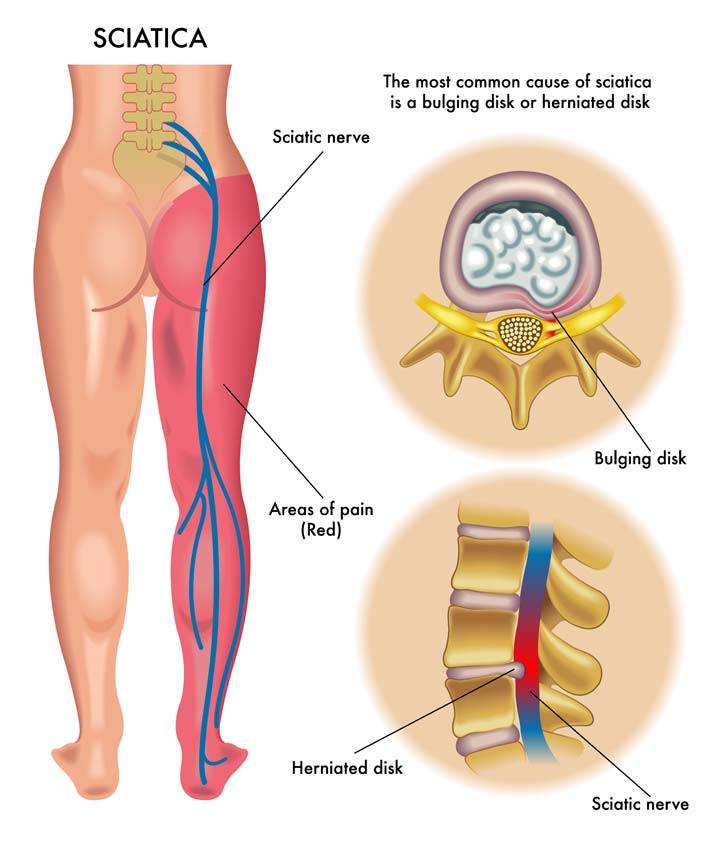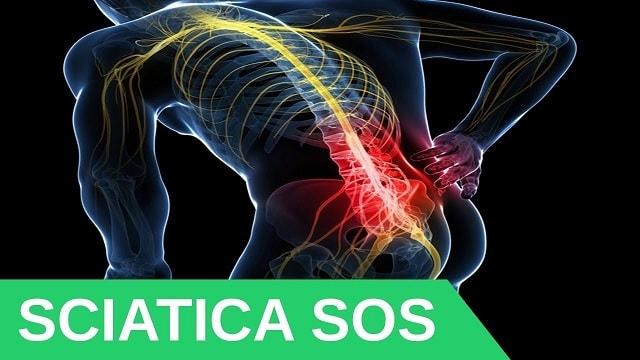Sciatica pain, lower back pain and accompanying symptoms are quite common in the modern world.
A number of causes can be linked to these problems.
Sciatica, a condition that refers to leg pain, may also contribute to the development of lower back pain.
However, sciatica is often considered a symptom of an underlying problem, instead of a condition on its own.
Therefore, understanding the condition can assist with an improvement in symptoms through the right treatment approach.
Different studies have been conducted to identify the epidemiology of sciatica pain in the general population.
One study1 suggests a prevalence of up to 3.1%, with men being affected more commonly than women.
Some studies have, however, suggested that the prevalence may be as high as 5.3%.
Less than 5% of lower back pain cases are linked to sciatica, but with more than half of all affected patients continuing to experience symptoms two years after their initial treatment, sciatica serves as an essential topic to be discussed.
Learn how Hayley, Jan, Dr Christian, Michaela, Huw, Elizabeth Tiffany , WT Police officer, M Taylor and Franco successfully rehabbed their sciatica, back injuries and beat their back pain.

Do You Have a Burning Question about Sciatica and Low Back Rehabilitation?
Contact Me Now Through This Link, HERE.
HOW SCIATICA AND LOW BACK PAIN AFFECTS YOUR NEUROLOGICAL WELLBEING
The effects of sciatica on a patient’s body can be disabling.
Even though the majority of cases where sciatica symptoms do develop tend to be relatively mild and can be easily treated, rare cases may become more serious.
This often occurs when the sciatica nerve suffered excessive damage.
What many people fail to realise is that the condition can have a dreadful impact on their psychological and neurological health as well.
And of course with the disabling effects of the condition in mind, a person may feel anxious about what they are to expect.
The inability to participate in their regular activities, be it just cooking a meal or running on the treadmill, can also make the affected individual feel depressed.
Anxiety sets in when in fact more physical activity is needed but, unfortunately the patient starts to realise that if the rehabilitation process isn’t customised their low back pain will increase and sciatica pain will be a consequence of the activity they need to participate in.
In this scenario.
Depression starts to set in.
The individual begins to realise how limited their overall functionality becomes with the presence of a crippling sciatica.
Other complications also occur.
The affected individual may also find that their performance in the workplace becomes affected and their ability to participate in activities with their family also becomes significantly restricted.
2 SYMPTOMS THAT NEEDS IMMEDIATE MEDICAL ATTENTION
Sciatica presents as treatable symptoms in the majority of patients, which leads to the administration of specific medical procedures and customised exercise programmes assisting in relieving the symptoms and treating the condition.
There are, however, some cases where nerve damage is more severe and potentially dangerous complications develop.
Below, we discuss two symptoms that should never be ignored by an individual diagnosed with sciatica.
1. Bowel and/or Bladder Incontinence
The first symptom not to be taken lightly when sciatica is present would be the incontinence in bowel movement and bladder control.
This accompanying symptom can be a sign that the patient has developed a far more significant condition that is called Cauda Equina Syndrome2.
Even though this complication of sciatica is rare, it can still happen, causing concern for the education of patients with sciatica.
Cauda Equina Syndrome refers to a lesion that occurs within the lumbosacral spine canal.
In addition to sciatica, the patient may also present with lower back pain, as well as a loss of their lower extremity sensorimotor function.
The initial symptoms that develop when a patient experiencing this complication is often considered to be subtle, making it more difficult for a patient to identify the condition early on.
This is why noticing the presence of bowel or bladder incontinence is so essential when sciatica is also present.
This can help to identify Cauda Equina Syndrome early on and lead to more successful treatment.
Surgical decompression of the patient’s spinal canal will be required immediately once this condition is diagnosed in a particular individual.

Keen to avoid aggravating your back pain injury – rehabilitating it, and transform your health and fitness?
Contact now Jazz Alessi through this link, HERE.
2. WORSENING NEUROLOGICAL SYMPTOMS
Another important series of symptoms that a patient should be wary of are related to their neurological function.
In particular, when numbness, weakness and tingling sensations are experienced in their legs, all classified as neurological symptoms, then the patient should seek urgent medical care from their physician.
These symptoms may signal the presence of more serious damage to affected nerves.
Additionally, this range of symptoms may also be a sign of the serious complication known as Cauda Equina Syndrome.
It should be noted, and at the same time, those neurological symptoms may be present in a patient with sciatica and not be a sign of Cauda Equina Syndrome.
Patients who do experience the combination of symptoms are advised to seek a physical examination by a physician and may possibly be sent for certain scans.
These scans will help the physician in determining whether the patient presents an emergency and whether an urgent medical procedure needs to be performed to reduce the risk of adverse reactions being experienced by the affected patient.
Conclusion
Sciatica can be a disabling symptom and may be a sign of a more serious underlying problem in the body.
In this article, we described just two important accompanying symptoms that people need to be more aware of, both of which may require immediate medical attention to avoid the possibility of complications.
In addition to the symptoms we pointed out above, it is also important to notice the presence of other signs that may signal a more serious underlying factor, including a reduction in a person’s appetite and sometimes also an accompanying fever.
This can assist with the initiating of early treatment, leading to a lower risk of experiencing possible complications.

If you are suffering from sciatica pain, or from low back pain, scoliosis or any type back related disorder and you’d like a back pain rehabilitation expert to successfully help you to rehabilitate your back please get in touch using this link now, HERE.
[/vc_column_text][/vc_column][/vc_row]References
1. R. Lewis, N. Williams and H.E. Matar. The Clinical Effectiveness and Cost-Effectiveness of Management Strategies for Sciatica Systematic Review and Economic Model. NIHR Journals Library. 2011. https://www.ncbi.nlm.nih.gov/books/NBK99305/
2. Multiple Authors. Cauda equina syndrome. U.S. National Library of Medicine. August 2008. https://www.ncbi.nlm.nih.gov/pubmed/18664636
Disclaimer: This website and all its content is to be used for information purposes only. This website or any of its content or links to third parties does not diagnose, advise, treat or cure any ailments, illness or disease.
You agree to hold harmless the owner of this site for any action taken on your own without consulting your medical doctor first by using the information on the website for diagnostic, treatment, or any other related purposes. This is not medical advice. If you are suffering from any illness, disease or ailments please contact your doctor first and immediately.



